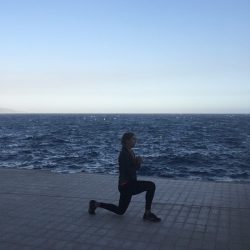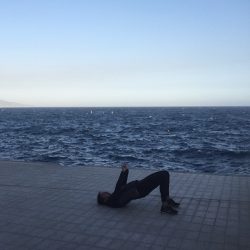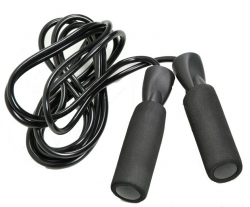Subscribe to our newsletter
Updates and latest offers to your inbox every two weeks
Updates and latest offers to your inbox every two weeks
This winter our friends at Morgan Jupe are lucky enough to be whipped into shape by their own resident personal trainer and Chalet Host, Harri Bennet. No excuses not to be ski fit when she is on the door step!
Whether you are just starting out or you have been skiing 10 weeks a year; skiing and snowboarding can take its toll on your body. If you want to make the most of your trip and hit the slopes hard then a little preparation can work wonders.
Key areas to work on:
If you head to the gym already then incorporate some of the exercises below into your routine along with spin classes for cardiovascular fitness and body pump for a great all over work out. Just make sure you stretch to keep up your flexibility and you will be ready to shred the mountain before you know it.
7 exercises for skiing and snowboarding
1 – Plank– a great full body strengthener
Muscles worked – abs, lower back, glutes (buttocks), shoulders and legs.
Start with the standard forearm plank. Hold the position for as long as possible with good form and gradually increase by 10 seconds. Once you feel comfortable holding it for over 1 minute, try out some other plank varieties such as high planks and side planks
2 – Lunges – a compound exercise
Muscles Worked – quadriceps, hamstrings (thighs), glutes and core they are a great all-round pre-trip exercise which can be done anywhere.

Ski Fit with Morgan Jupe – Lunges
The lunge is a basic movement which can be performed by those of all levels. Beginners should start with body weight (no added weight) and then begin to increase the difficulty by adding weight as you progress.
3 – Jump Lunges – a plyometric exercise
4 – Glute Bridge – strengthen the bum!
Muscles worked – glutes and hamstrings

Ski fit with Morgan Jupe – Glute Bridge
Our glute muscles often become weaker in our everyday modern lives. Desk jobs and lack of activity can lead to imbalances in the muscles, which is not ideal as our glutes are used heavily in skiing and snowboarding.
Let’s get JUMPY!
Plyometric (jumping) exercises get your heart working, increasing your cardiovascular capacity but they also develop explosive power through the lower body whilst training your body to deal with the impact of landings so they are really perfect for skiers and snowboarders!
Start by aiming for three lots of 30 seconds of continuous movement with shorts rests in between. Then, once you feel confident begin to reduce the breaks or increase the work time.
5 – Squat Jump
6 – Box Jump
7 – Skipping
Skipping is one of the best forms of cardio when it comes to preparing your body for skiing or snowboarding. Skipping builds an incredible amount of stamina and strengthens both aerobic and anaerobic systems, meaning you’ll be able to ride for longer without feeling exhausted and picking up injuries.
Standard Jump rope is better if you are new to skipping. Because of the upright position and good posture required, the core is engaged whilst loading the calves, quads, hamstrings and glutes from jumping on the balls of the feet. Skipping ropes can be bought very cheaply and can be taken literally anywhere – a perfect traveling workout.

Ski Fit with Morgan Jupe – Skipping
Don’t be disheartened if you pick up the rope for the first time and you are pretty rubbish, people always think they ‘should’ just be able to skip when in fact skipping requires coordination, proprioception and quick footwork. Start slow and you’ll soon see your skills improving, allowing you to jump faster and gain more technique.
Try to skip for 1 minute then rest for 1 minute, working on footwork first. Once you begin to feel more comfortable, increase the work time and reduce the rests and begin to increase your speed. Take it on to running once you have mastered standard jump rope by swapping from foot to foot.
So, don’t forget a little preparation goes a long way! Spending a little time on your fitness, strength and flexibility now will help you get through your ski holiday injury free having skied or snowboarded your very best!
Check out our stretching blog to find out how to increase your flexibility and warm up before the mountain.
Comments are closed here.